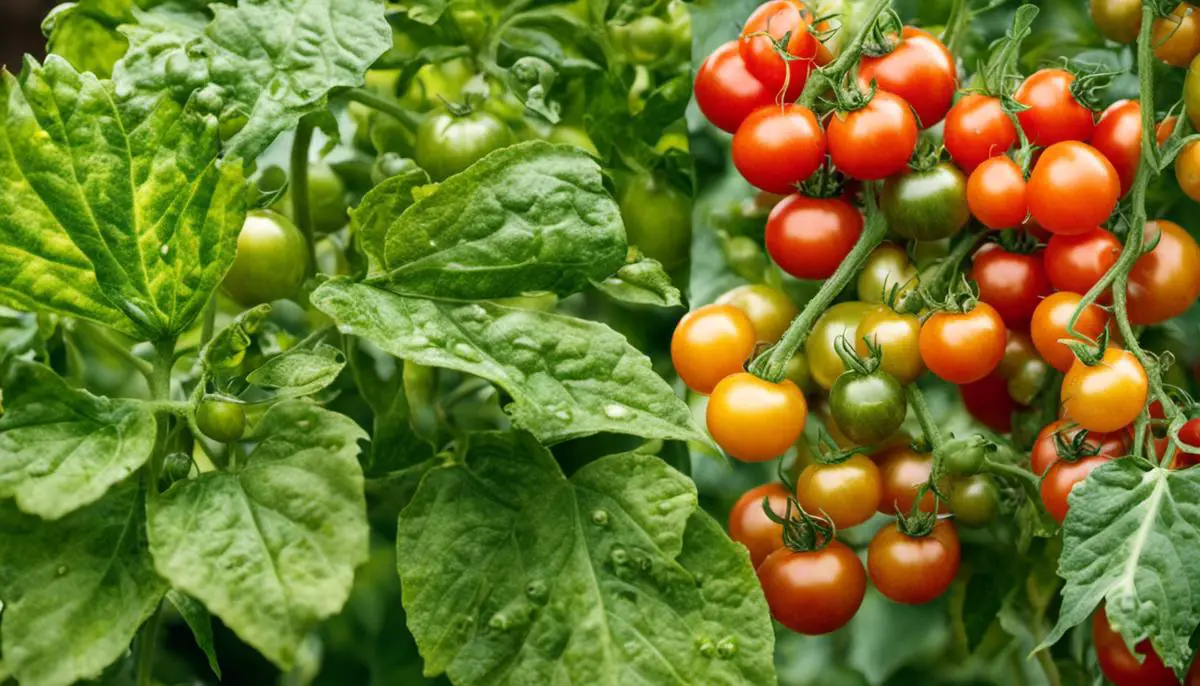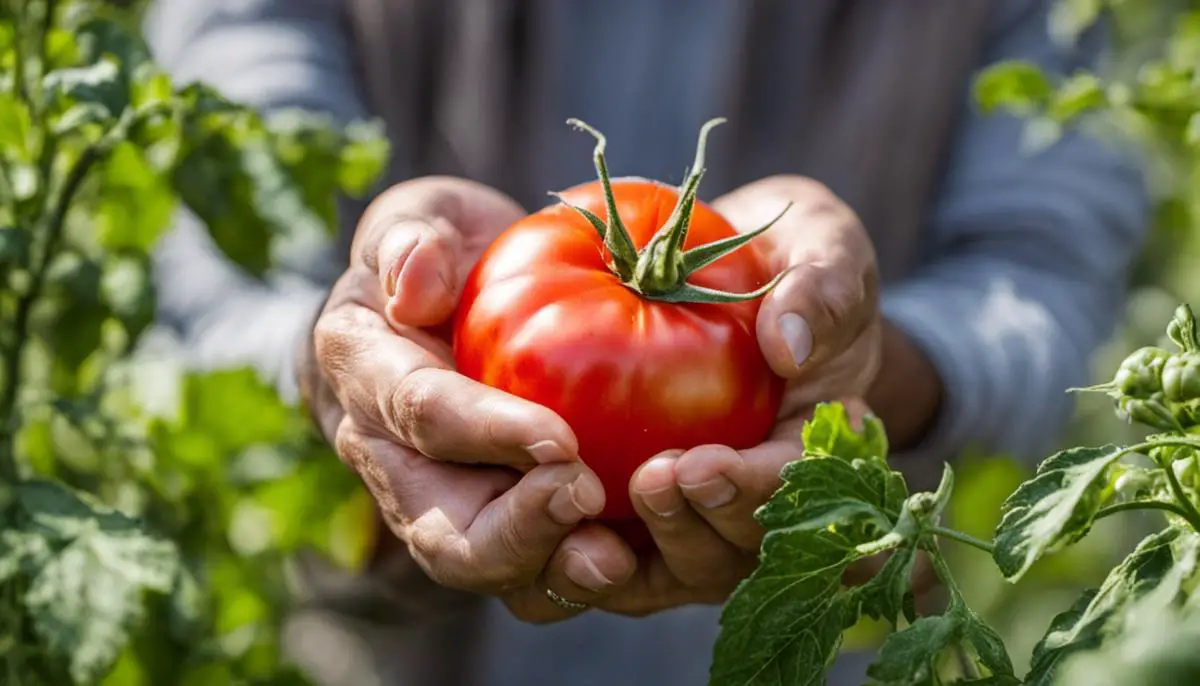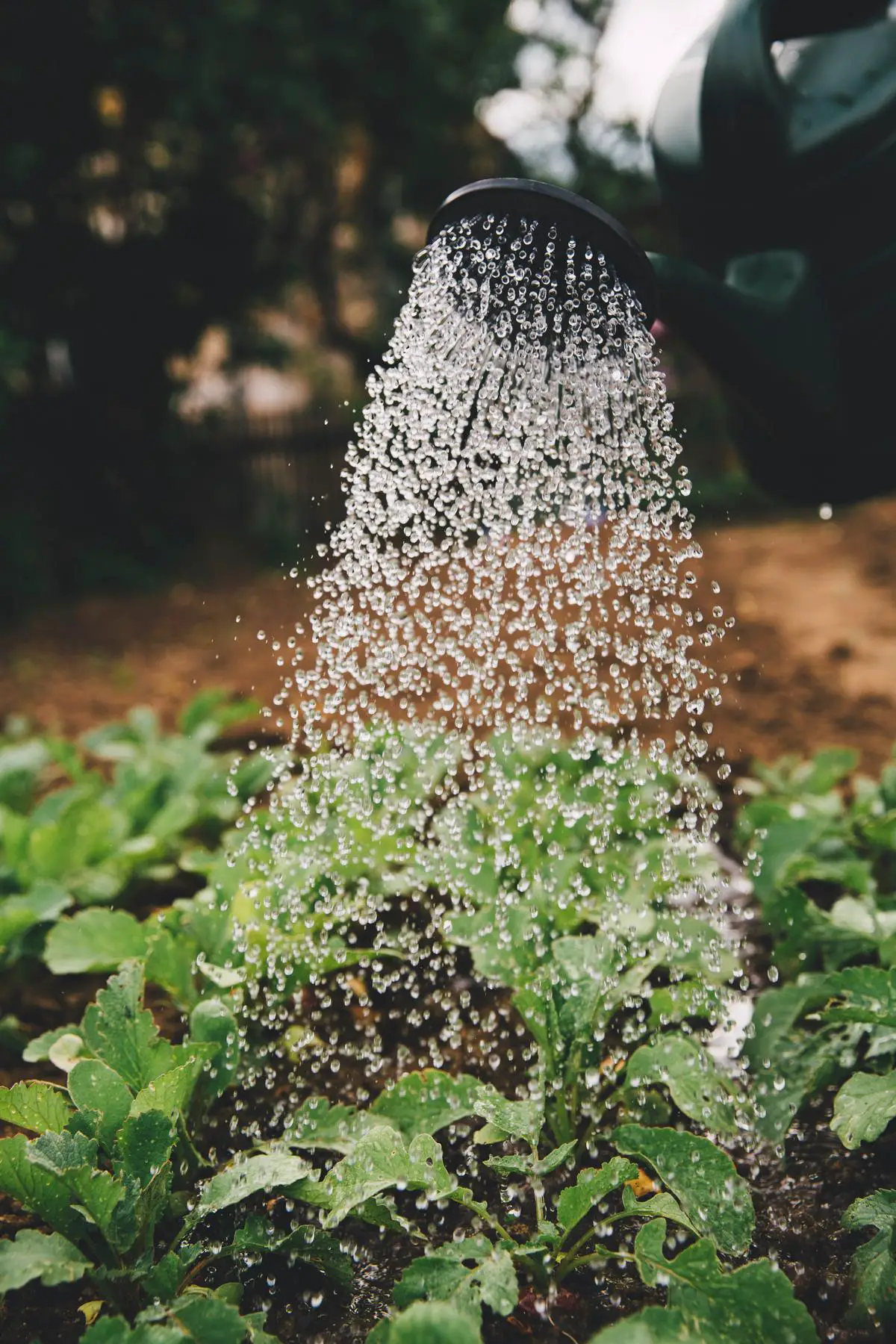Table of Contents
Tomato blight, in all its forms, can present a significant threat to the overall health and vitality of your tomato plants. Recognizing the symptoms of this fungal disease is critical in its early detection and effective treatment. This text uncovers the various types of tomato blight such as early blight, late blight, and Septoria leaf spot, each with a unique set of symptoms. Furthermore, this text provides essential insights into the preventative measures to be adopted, ensuring robust health of your plants and reducing the chances of a blight outbreak. This further comprises of smart farming practices like planned crop rotation, selecting blight-resilient varieties, strategic watering, and apt plant spacing to enhance air circulation.
Identifying Tomato Blight
Early Blight Identification
Early blight is among the common tomato plant diseases and can be easily identified by observing older leaves of your tomato plants. Look out for dark, concentrically ringed spots on these leaves. These spots often have a yellow halo around them. As the disease progresses, the affected leaves may turn yellow and wither. This blight typically begins at the bottom of the plant and works its way upwards.
Late Blight Symptoms
Late blight, unlike early blight, can affect young as well as mature leaves. This fungal disease literally appears overnight in damp, cool weather. Indications include the sudden appearance of fluffy white fungal growth on the leaves’ undersides. It eventually turns into large, dark brown, oily looking, and irregularly shaped blotches on the tops of leaves, stems, and even the fruit.
Recognizing Septoria Leaf Spot
Septoria leaf spot is another common problem in tomato plants that mainly affects the foliage but doesn’t infect the fruit. The initial signs are small, water-soaked spots on the foliage. These spots rapidly enlarge and turn into circular patches about an eighth to a quarter of an inch in diameter. The distinguishing feature of this disease is the light grey centers of these spots that are surrounded by dark edges i.e., tiny black spots with lighter centers. The disease can cause severe defoliation, starting from the bottom and working its way upwards, resembling early blight.
Each of these diseases requires a different treatment approach, so it’s crucial to accurately identify which one is affecting your plants before proceeding with any interventions.

Prevention Methods
Understanding Blight Prevention Measures
The fight against blight begins with your choice of tomato variety. Choose blight-resistant varieties such as ‘Legend’, ‘Mountain Magic’, or ‘Iron Lady’. These varieties have shown resistance to both early and late blight, reducing the susceptibility of your produce.
Crop rotation plays a pivotal role in reducing blight risks. If blight was present in the previous growing season, it’s recommended to avoid planting tomatoes in the same location for at least three years. This practice helps break blight life cycles and prevents the disease from overwintering in the soil.
Another key to blight prevention is proper watering technique. Be cautious in your watering practices to avoid wetting the leaves since blight thrives in wet conditions. Drip irrigation or soaker hoses work best as they deliver water directly to the roots, keep foliage dry, and minimize the spread of fungal spores.
Optimal plant spacing is also crucial for blight prevention. When planted too closely, tomato plants prevent air from circulating which creates an environment where blight can thrive. As a rule of thumb, plant tomatoes 24 to 36 inches apart in a row with rows spaced 48 inches apart. This spacing provides adequate air circulation which helps keep the leaves dry and lessen the chances of a blight invasion.
Regular inspection of your tomato plants can help prevent an outbreak. At the first sign of blight, remove and destroy affected leaves to curtail the spread of the disease. Plant debris should be cleaned and removed during and after the growing season as it can harbor disease pathogens.
Incorporating these preventative measures in your gardening routine will go a long way in minimizing the risks of tomato blight. Armed with this knowledge, you can look forward to healthy, delicious tomatoes from your garden.

Blight Treatment Techniques
Understanding Tomato Blight Treatment
To treat tomato blight, the first method involves the use of copper or sulfur-based fungicides. These chemicals can be mixed with water and then sprayed onto the leaves of the infected tomato plant, particularly on the undersides where the fungus is most likely to live. For best results, use this treatment once a week. This type of fungicide works by creating a barrier on the leaf surface that inhibits the growth of the blight fungus.
Biofungicides for Blight Control
A more environmentally friendly alternative entails using biofungicides such as Serenade or Actinovate. These treatments contain bacteria or other microorganisms that are enemies of the blight-causing fungi. For Serenade, dilute the concentrate with water and thoroughly spray the plants every 7 days. Meanwhile, Actinovate must be mixed with water and can be used as a soil drench, foliar spray, or in hydroponic systems for disease control. This provides a natural way to combat the fungus without introducing harmful substances into your garden.
Application Methods
The manner of application of these treatments is essential to effectively control blight. Always remember to read the instructions on the packaging for correct mixing amounts. When spraying intended solutions, it’s essential to cover all leaf surfaces until evenly wet but not dripping. Spray the solution early in the morning or late in the evening when it’s relatively cooler. It’s ideal because it allows the solution enough time to dry before the temperature rises, which can potentially cause plant burn.
Importance of Regular Treatment
Continual treatment is crucial to control tomato blight. This should not be a one-time thing. It’s necessary to regularly administer these treatments, which generally should be every seven days. Moreover, each time it rains, you will need to reapply the fungicides as the protection has probably been washed off.
Proper Sanitation Practices
Effective prevention and management necessitate good sanitation. Remove and discard infected plants immediately. Avoid composting them as this may lead to the spread of the disease. Try not to work in your garden when the leaves are wet, as this can spread the fungus. Regularly disinfect your tools with a bleach solution to avoid spreading the blight from plant to plant.
By utilizing these techniques and treatments, you can combat tomato blight in your garden, yielding healthy, robust tomato crops.

Photo by markusspiske on Unsplash
While dealing with tomato blight could certainly be challenging, a firm grasp of the treatment techniques can go a long way in counteracting its effects. Even after the attack, it is possible to salvage the situation through both organic and chemical treatments, such as the use of copper or sulfur-based fungicides, or biofungicides like Serenade or Actinovate. A key focus is also learning the recommended application procedures for these treatments to ensure the best results. In empowering yourself with these insights and methods, you stand a better chance at not only treating tomato blight effectively but also expertly preventing its occurrence in the first place.

